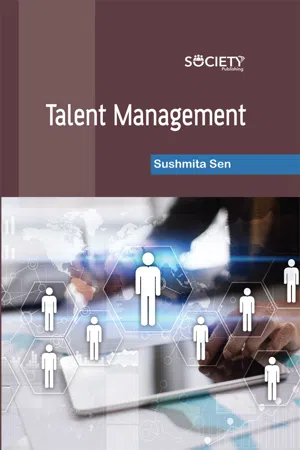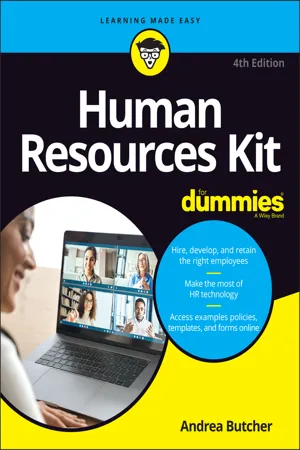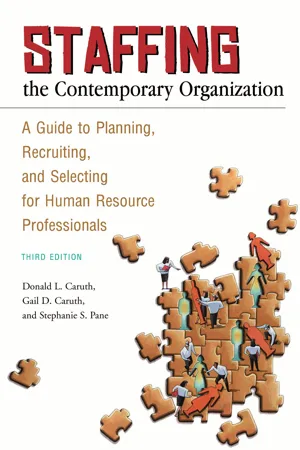Business
Contingent Selection
Contingent selection is a hiring strategy that involves selecting employees based on their ability to adapt to changing circumstances. This approach is particularly useful in industries where the business environment is constantly evolving, as it ensures that employees are able to keep up with new challenges and opportunities. By selecting candidates who are flexible and adaptable, businesses can improve their chances of success in a rapidly changing marketplace.
Written by Perlego with AI-assistance
Related key terms
1 of 5
3 Key excerpts on "Contingent Selection"
- eBook - PDF
- Sushmita Sen(Author)
- 2019(Publication Date)
- Society Publishing(Publisher)
It must be taken care that not only the job but also the work and the organizational context being offered should be given attention. When an applicant undergoes selection process, he/she generally has more than one organization to choose from. Applicants assess the emerging relationship between themselves and their prospective employer. The basis on which they can judge is the correspondence from potential employers; in their experience of the selection methods used by the employer; and in the information they gain on interview. During employee Selection applicants are interviewed and evaluated for a specific job based upon certain criteria like qualifications, skills and experience. Employee selection process can be simple or complicated based on the position being offered and that the firm that’s hiring. Certain employment and labor laws such as anti-discrimination laws must be obeyed during employee selection. Simply put, employee selection is an art of matching right people with the right job. It is a technique of making sure that the skills and qualifications of people are in sync with organizational requirements. Employee Selection is the process of selecting individuals who have appropriate qualifications to fill jobs in an organization. Without qualified employees, an organization has no hope of making it past the competition. There is so much more associated with selection than choosing the best available person. Selection also involves choosing the proper set of knowledge, skills, and abilities (KSAs)—which come packaged in a human being. KSA can be useful in trying to bridge the gap between what the applicant can and wants to do, and what the organization needs. Trying to find out what an applicant really can and wants to do isn’t a breezy affair but needs to be worked out. Fit between the applicant and the Talent Management 114 organization affects both the employer’s inclination to make a job offer and an applicant’s inclination to accept a job. - eBook - PDF
- Andrea Butcher(Author)
- 2023(Publication Date)
- For Dummies(Publisher)
» It offers departments a way to handle special projects — or special problems — that lie beyond the expertise of current staff members. » It gives the organization an opportunity to engage — on a short-term basis — high-level specialists it can’t afford for the long term. » It creates job stability for a core group of full-time workers in highly cyclical businesses. Otherwise, those sorts of businesses need to subject their workforces to constant nerve-racking cycles of hiring and layoffs as the demands of the business fluctuate. » It provides what amounts to a trial period for potential new employees. If, as your needs evolve, you decide to consider converting a contingent worker to employee status, you have the advantage of already knowing some of the individual’s capabilities and personal attributes. » It allows an organization to grow and scale more quickly, especially when in-demand skill sets are required. Determining whether they’re the right fit The more proactive and strategic you and hiring managers are in approaching your talent needs, the bigger the payoff. However, before you use contingent workers, answer these threshold questions: CHAPTER 4 Creating a Talent Strategy Aligned with Business Strategy 51 » What specific tasks do you need someone to perform and over what time period? The shorter the time period, the more inclined you should be to seek contingent help. » What skills or expertise are necessary to perform those tasks? Generally speaking, the use of contingent workers enables you to tap into a knowledge base that’s far broader than you can find in your current staff. » Can people who are on the organization’s payroll perform those tasks — without affecting other aspects of their job performance and without creating excessive overtime costs? Balancing basic responsibilities with additional tasks isn’t easy. - eBook - PDF
Staffing the Contemporary Organization
A Guide to Planning, Recruiting, and Selecting for Human Resource Professionals
- Donald L. Caruth, Gail D. Caruth, Stephanie S. Pane(Authors)
- 2008(Publication Date)
- Praeger(Publisher)
8 The Selecting Process Selecting is the process of choosing from a group of applicants the individual deemed to be best qualified for a particular job opening. An organization’s suc- cess in its recruiting activities significantly affects the efficiency and effective- ness of selection. An adequate pool of applicants provides an organization with greater latitude in choosing employees; an inadequate pool reduces the amount of latitude and may result in the employment of marginally qualified candidates. Selecting is, at best, a difficult process because it involves making judgments about people. Three essential questions must be answered if the most qualified person is to be selected: “What is the applicant’s can do ability?” “What is the applicant’s will do ability?” “How well will the applicant fit into the organiza- tion?” Can do ability refers to experience and education required to perform a specific job; will do ability refers to the level of motivation the person will actually exert in performing the job; fit refers to how well the individual will con- form to the sociopsychological environment or culture of the organization. Mak- ing these determinations requires skill, effort, and time. Moreover, in an effective selection process, such decisions must be carefully made. Mistakes made during the selection process can be costly. Hiring individuals who cannot or will not do their jobs leads to output and quality problems, and ultimately to employee turnover. Hiring individuals who do not fit into the organization well leads to the same problems and may also adversely affect the morale of other employees. Consequently, selecting must be done carefully in order to minimize potential negative impacts, financial and otherwise, on the organization. As emphasized throughout this book, the entire human resource management function operates in an increasingly legalistic environment.
Index pages curate the most relevant extracts from our library of academic textbooks. They’ve been created using an in-house natural language model (NLM), each adding context and meaning to key research topics.


